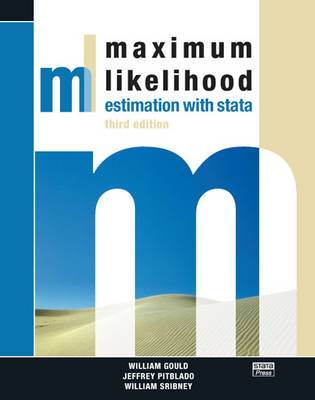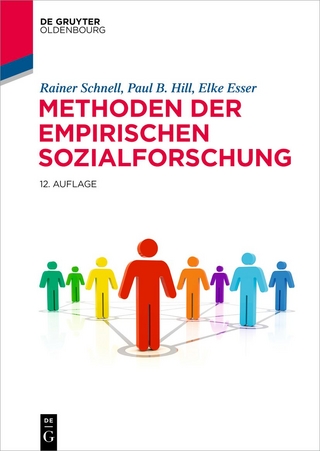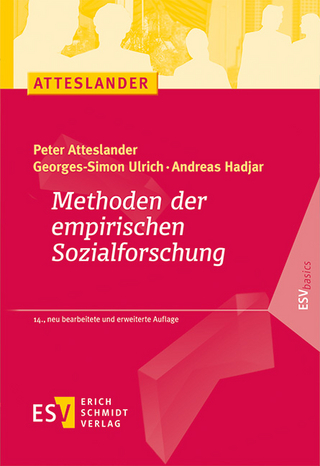
Maximum Likelihood Estimation with Stata, Third Edition
Stata Press (Verlag)
978-1-59718-012-2 (ISBN)
- Titel erscheint in neuer Auflage
- Artikel merken
Written by the creators of Stata's likelihood maximization features, Maximum Likelihood Estimation with Stata, Third Edition continues the pioneering work of the previous editions. Emphasizing practical implications for applied work, the first chapter provides an overview of maximum likelihood estimation theory and numerical optimization methods. With step-by-step instructions, the next several chapters detail the use of Stata to maximize user-written likelihood functions. Various examples include logit, probit, linear, Weibull, and random-effects linear regression as well as the Cox proportional hazards model. The final chapters describe how to add a new estimation command to Stata. Assuming a familiarity with Stata, this reference is ideal for researchers who need to maximize their own likelihood functions.
New ml commands and their functions:
constraint: fits a model with linear constraints on the coefficient by defining your constraints; accepts a constraint matrix
ml model: picks up survey characteristics; accepts the subpop option for analyzing survey data
optimization algorithms: Berndt-Hall-Hall-Hausman (BHHH), Davidon-Fletcher-Powell (DFP), Broyden-Fletcher-Goldfarb-Shanno (BFGS)
ml: switches between optimization algorithms; computes variance estimates using the outer product of gradients (OPG)
Preface
Versions of Stata
Notation and Typography
THEORY AND PRACTICE
The likelihood-maximization problem
Likelihood theory
The maximization problem
Monitoring convergence
OVERVIEW OF ml
The jargon of ml
Equations in ml
Likelihood-evaluator methods
Tools for the ml programmer
Common ml options
Maximizing your own likelihood functions
METHOD lf
The linear-form restrictions
Examples
The importance of generating temporary variables as doubles
Problems you can safely ignore
Nonlinear specifications
The advantages of lf in terms of execution speed
The advantages of lf in terms of accuracy
METHODS d0, d1, AND d2
Comparing these methods
Outline of method d0, d1, and d2 evaluators
Summary of methods d0, d1, and d2
Linear-form examples
Panel-data likelihoods
DEBUGGING LIKELIHOOD EVALUATORS
ml check
Using methods d1debug and d2debug
ml trace
SETTING INITIAL VALUES
ml search
ml plot
ml init
INTERACTIVE MAXIMIZATION
The iteration log
Pressing the Break key
Maximizing difficult likelihood functions
FINAL RESULTS
Graphing convergence
Redisplaying output
WRITING DO-FILES TO MAXIMIZE LIKELIHOODS
The structure of a do-file
Putting the do-file into production
WRITING ADO-FILES TO MAXIMIZE LIKELIHOODS
Writing estimation commands
The standard estimation-command outline
Outline for estimation commands using ml
Using ml in noninteractive mode
Advice
WRITING ADO-FILES FOR SURVEY DATA ANALYSIS
Program properties
Writing your own predict command
OTHER EXAMPLES
The logit model
The probit model
The normal model: linear regression
The Weibull model
The Cox proportional hazards model
The random-effects regression model
The seemingly unrelated regression model
APPENDIX A: Syntax of ml
APPENDIX B: Likelihood evaluator checklists
APPENDIX C: Listing of estimation commands
References
Author Index
Subject Index
| Erscheint lt. Verlag | 15.11.2005 |
|---|---|
| Verlagsort | College Station |
| Sprache | englisch |
| Gewicht | 635 g |
| Themenwelt | Sozialwissenschaften ► Soziologie ► Empirische Sozialforschung |
| ISBN-10 | 1-59718-012-2 / 1597180122 |
| ISBN-13 | 978-1-59718-012-2 / 9781597180122 |
| Zustand | Neuware |
| Haben Sie eine Frage zum Produkt? |
aus dem Bereich



